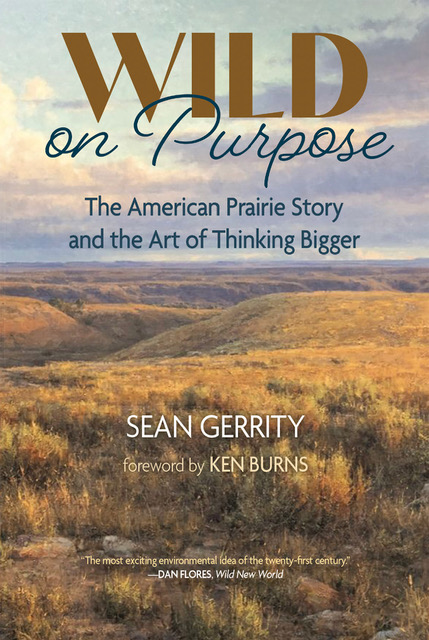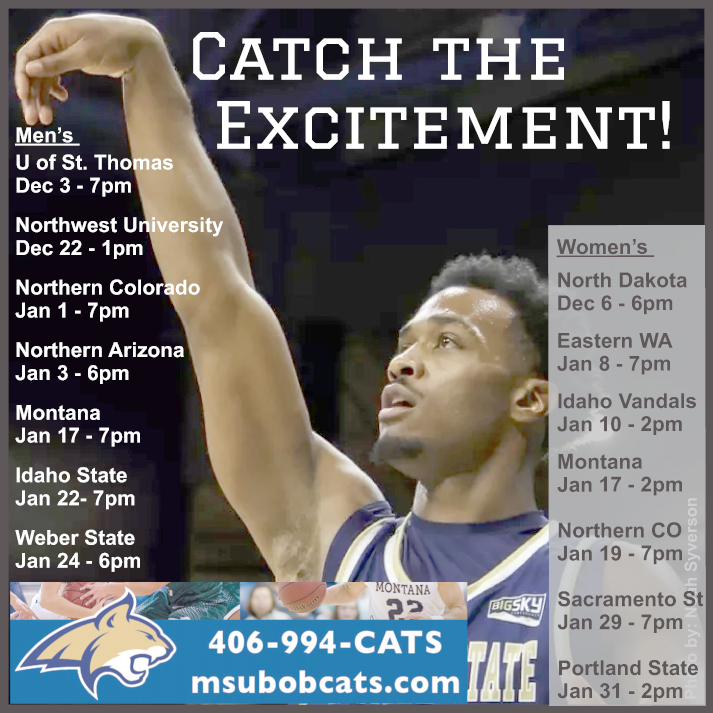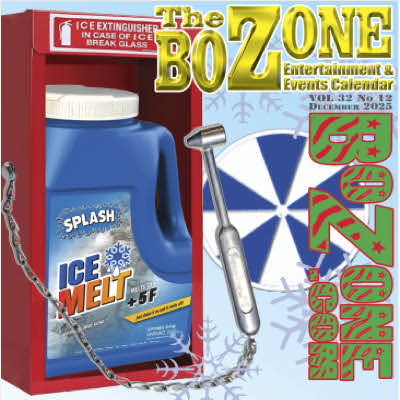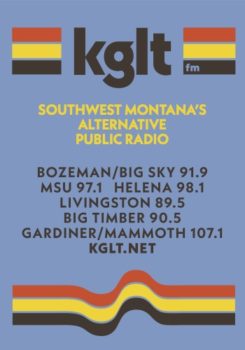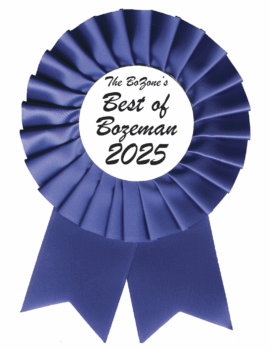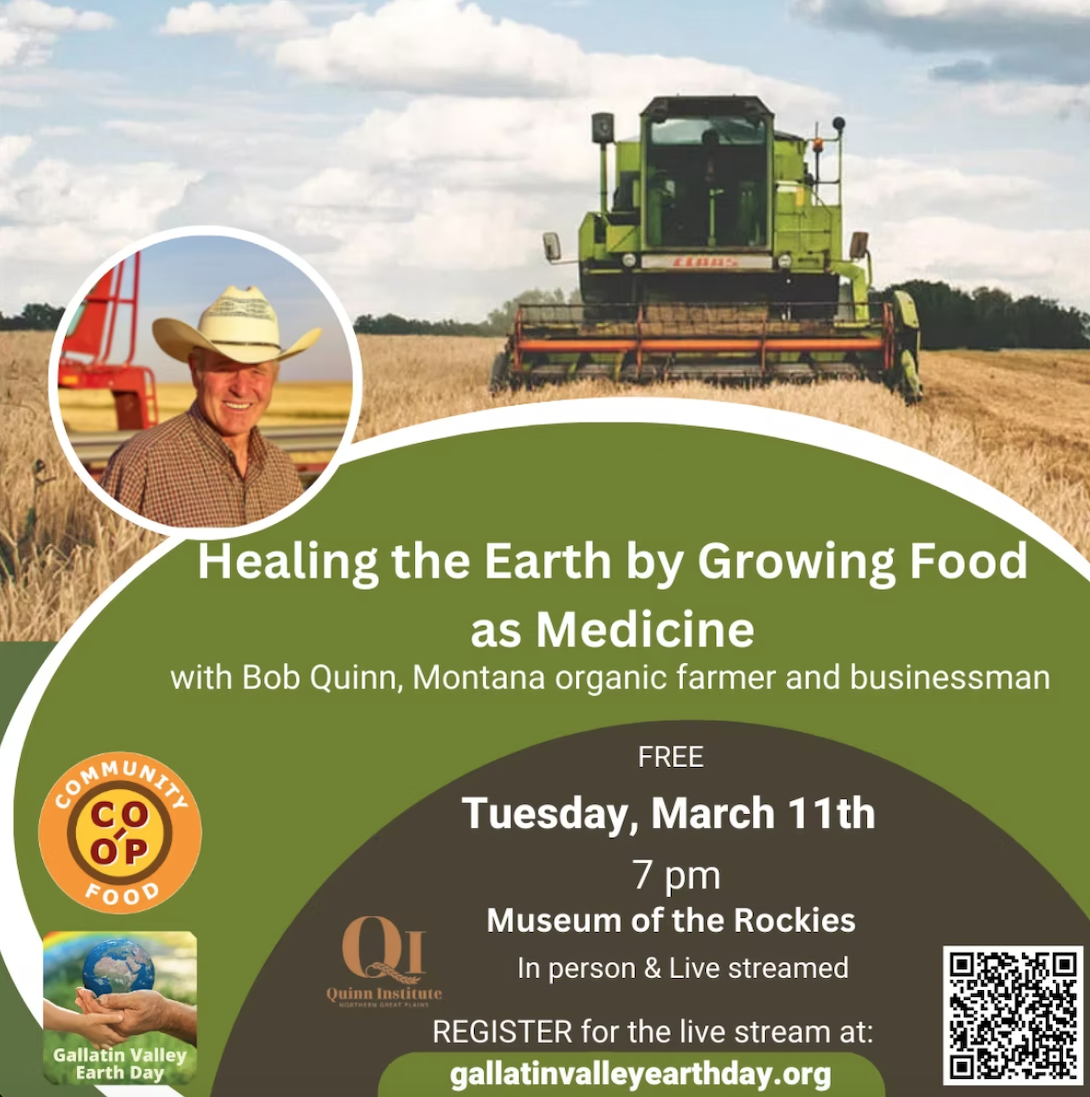A recent poll administered online to residents of four Western states: Montana, Colorado, North Dakota and Utah. This release focuses on attitudes toward the coronavirus pandemic and how imposed restrictions were impacting respondents. The second section focused on political opinions during the time period. Details about the poll results and methodology are available at http://helpslab.montana.edu/.
Part 1:
Summary: In an online survey conducted in April of residents of Colorado, Montana, North Dakota and Utah, most respondents expressed little worry they would catch the virus, but 70% were worried about the health of others. Between 15% and 20% of adults in each state reported they had been laid off or furloughed due to the novel coronavirus, and anxieties over finances were prevalent. However, most people supported government actions and were taking personal actions to prevent the spread of the coronavirus.
BOZEMAN – A recent online poll of residents in Colorado, Montana, North Dakota and Utah found that respondents are supportive of coronavirus pandemic restrictions but are also worried about its economic ramifications.
David C.W. Parker<http://www.montana.edu/politicalscience/directory/1524455/david-parker>, professor of political science<http://www.montana.edu/politicalscience/index.html> at Montana State University, said the poll conducted in April found that while respondents back the restrictions imposed by local and state governments, people are also worried about the impacts to the economy and personal finances from the coronavirus.
“The biggest worry and concern that we found is about the health of the economy rather than a collapse of the health care system,” Parker said. “Also, our respondents expressed more worries for the health and safety (of) people they know rather than for themselves.”
The questionnaire answered by 2,220 respondents was part of a poll conducted by political scientists at MSU and the University of Denver and administered online to residents in the four states between April 10 and April 27. The survey was weighted to reflect demographics in the respective states.
The first section of the poll, detailed in this release, focused on public health and economic fallout related to the coronavirus pandemic and resulting restrictions. The first section also investigated respondents’ willingness to adapt to public health directives and their level of support for various public policy actions to address the impacts of the virus.
The second section of the poll focused on political opinions during the time period and will be released tomorrow.
Parker said the survey revealed that relatively few of the 2,220 respondents had contracted the virus at the time, and only a small number of people had a problem accessing health care during the pandemic.
“A larger percentage have experienced economic fallout from the coronavirus, specifically in lost income and wages,” Parker said. “Between 15% and 20% of adults in each state have been laid off or furloughed due to the coronavirus.”
One result that surprised the pollsters was that there was a great deal of agreement about social distancing and hygienic practices, regardless of political affiliation.
“We didn’t see significant divides based on partisanship in social distancing and hygiene practices,” Parker said “We didn’t see partisan divides in support for stay-at-home orders. People appear to be willing to take precautionary measures to prevent the spread of coronavirus and would like government guidelines and enforcement. However, they also expect government to take unprecedented and dramatic steps to mitigate economic loss.”
The poll was administered by Parker, MSU HELPS Lab<http://helpslab.montana.edu/> Director Eric Raile<http://www.montana.edu/politicalscience/directory/1588603/eric-raile>, and Elizabeth Shanahan<http://www.montana.edu/politicalscience/directory/1524583/elizabeth-shanahan>, all professors in the Department of Political Science<http://www.montana.edu/politicalscience/index.html> in the MSU College of Letters and Science<http://www.montana.edu/lettersandscience/index.html>, as well as Pavielle Haines<https://www.paviellehaines.com/> of the Center on American Politics at the University of Denver.<https://www.du.edu/americanpolitics/> In all, 503 Coloradans responded to the survey from April 10‐19; 738 Montanans responded to the survey April 10‐27; 481 North Dakotans responded April 10‐25; and 498 Utahns responded April 10‐15.
Parker said the four states surveyed were selected for their geographical proximity yet cultural and political variances. The states had different restrictions and degrees of stay-at-home orders, including no orders in North Dakota. He said the political scientists thought that with many respondents at home and on computers, often consuming a great deal of news-related content, the poll could capture a snapshot of a distinct period of regional history. Parker said the pollsters sought to build upon successful polls that the MSU team had conducted both before<https://www.montana.edu/news/18125> and after<https://www.montana.edu/news/18343/msu-mtn-poll-shows-party-affiliations-and-uncertainty-about-ballot-initiatives-meant-montanans-voted-for-status-quo> the 2018 elections<https://www.montana.edu/news/18136/msu-mtn-poll-finds-dichotomies-characterize-montanans-political-preferences>.
“There are a lot of different dimensions in these four states that have geographical similarity,” he said.
The poll was funded by the Office of the Vice President of Research, Economic Development and Graduate Education<https://www.montana.edu/research/> at MSU, the Department of Political Science at MSU, and the Center on American Politics at the University of Denver. Data and more information may be found at http://helpslab.montana.edu/.
Key findings from the poll were:
*Most people report that the coronavirus is a source of significant stress in their lives (“moderately” or “very” stressful), with women reporting higher levels of stress than men. Younger adults tend to report higher levels of stress and disruption associated with the coronavirus. People are generally not very worried about being able to get tested or treated – about 60‐65% express little or no worry about access to tests if they develop symptoms of the disease. People are more concerned that someone in their social circle will become seriously ill than they are concerned that the health care system will become overloaded.
*About one‐third to one‐half of people across all four states are “moderately” or “very” worried about local availability of health care services because of the coronavirus, while roughly three‐quarters of people fear the collapse of small businesses in their state and a national economic depression.
*People are highly attentive to news on the coronavirus, with television being the most important source. People are hungry for information about many aspects of the pandemic, but the most important information they seek is about cures and vaccines. Information about medical supplies is the second‐most important type of information being sought. People overall are much more interested in what scientists are saying about the coronavirus than what political, business and religious leaders are saying.
*The vast majority of people appear to be complying with public health guidelines. Unnecessary social interactions and trips outside the home are down for most people, and most people are being more proactive about hygiene.
*Overall, people are looking for government intervention. Majorities of 65% or greater would support a federal stay‐at‐home order. A majority of Republicans, Democrats and Independents in all four states support such a federal directive. This suggests that although protestors advocating for the reopening of the economy are gaining a great deal of media attention, they represent a small minority. Views about whether government stay‐at‐home orders were necessary to achieve compliance from the public basically corresponded to the current state‐level policies.
People are also looking to the government to address the economic fallout of the pandemic. Large majorities, regardless of partisanship, support government financial assistance to individuals and small businesses. People are much less convinced about financial assistance for large corporations.
Part 2:
Summary: The survey of residents of Colorado, Montana, North Dakota and Utah found support for state and local governments and stay‐at‐home orders.
BOZEMAN – A recent online poll of residents in Colorado, Montana, North Dakota and Utah found that a clear majority of respondents gave their governors and state local government high marks for their response to the coronavirus pandemic, with thoughts about the federal government’s response splitting along party lines.
David C.W. Parker<http://www.montana.edu/politicalscience/directory/1524455/david-parker>, professor of political science<http://www.montana.edu/politicalscience/index.html> at Montana State University, said the poll conducted in April confirmed a long-held finding by political scientists that there is a “rally ‘round the flag” effect during times of crisis. And the current coronavirus crisis did not differ.
“In every state, a large majority of people approve of the job their governor is doing to manage the coronavirus crisis,” Parker said. He added that part of the reason governors garnered high marks is that they dominated press coverage during the period of the poll, which was between April 10 and April 27.
Roughly 65‐80% of respondents in all four states said they believe state and local governments have had the appropriate level of involvement in developing policies in response to the coronavirus crisis.
“Respondents also give overwhelmingly high marks to local governments, schools, scientists and their fellow citizens for their response to the coronavirus crisis,” Parker said.
About 30% of respondents across three states – and 45% in Colorado – believe the federal government has not done enough in responding to the crisis.
“This breaks predictably along party lines, with Republicans generally believing the federal government has done about the right amount while Democrats are more likely to say not enough has been done,” Parker said. Independents generally fall somewhere in the middle, he said, except in Colorado where a majority indicate that the federal government has not done enough in its coronavirus response.
The questionnaire answered by 2,220 respondents was part of a poll conducted by political scientists at MSU and the University of Denver and administered online to residents in Montana, Colorado, North Dakota and Utah. The survey was weighted to reflect demographics in the respective states. The first section of the poll focused on public health and economic fallout related to the coronavirus pandemic and resulting restrictions and may be found here<https://www.montana.edu/news/19951/msu-poll-finds-westerners-worried-about-coronavirus-financial-impacts-but-taking-actions-to-prevent-spread>. This second section focused on political opinions during the time period.
Although more people approve than disapprove of the job their U.S. senators are doing to manage the crisis (with the exception of respondents in Colorado), 28‐40% of respondents report that they don’t know if they approve or disapprove of their senators’ actions.
“We suspect this is largely due to the volume of media attention concentrated on state and local officials,” Parker said. “Relatively little coverage has been devoted to how specific senators or members of Congress are addressing the pandemic.”
That dynamic may have an impact in the upcoming elections. Montana and Colorado feature U.S. Senate races in which a governor and a former governor are running against incumbent senators. In Montana, Democratic Gov. Steve Bullock is running against freshman Sen. Steve Daines, a Republican. Despite having only announced his candidacy in early March, the poll finds Bullock with support from 47% of respondents, Daines with 40% and 7% of likely voters still undecided.
“This is a statistical tie since this lead is within the sample’s margin of error,” Parker said.
In Colorado, former Gov. John Hickenlooper has a substantial lead of 17 points that is outside the sample’s margin of error, Parker said. However, roughly 17% of likely Colorado voters remain undecided.
“Depending on which way they ultimately swing, Hickenlooper’s lead could shrink,” Parker said, noting many undecided voters in Colorado are Independents.
Parker said that in Montana, North Dakota and Utah, a majority of respondents approve of President Trump’s response to the coronavirus crisis, although substantial minorities, or about 40%, express disapproval. In Colorado, only 34% of voters approve of the job President Trump is doing related to the coronavirus crisis.
The poll also asked respondents in Montana and Colorado whom they would support in November’s presidential election.
Parker said that in Montana, where Donald Trump bested Hillary Clinton by more than 20 points in 2016, the election in 2020 appears to be considerably tightened. Forty-five percent of Montanans support Trump, while 40% of Montanans report they would vote for the presumptive Democratic nominee, former Vice President Joe Biden. Trump’s lead is within the sample’s margin of error. Another 10% indicate supporting some other candidate, with only 5% undecided.
In Colorado, Biden leads Trump by 18 points (53% to 35%). Parker calls that a substantial lead well outside the poll’s margin of error. Only 8% of voters are undecided, with another 3% expressing a preference for another candidate.
While protests over stay-at-home restrictions have been widely reported over the last week, the poll found respondents support stay‐at‐home orders regardless of partisanship.
“However, some differences emerge when respondents are asked if people should be trusted to social distance on their own or if it is necessary for governments to issue orders because people cannot be trusted to voluntarily social distance themselves,” Parker said. Results in this category varied by state. Respondents are evenly split in Utah and Montana. A majority in Colorado indicate that governments must issue orders, while a majority in North Dakota trust people to take responsibility to socially distance themselves.
“These splits may hint at key differences in the political cultures of the four states,” he said.
Majorities in every state agree that the Chinese government is responsible and should shoulder blame for the coronavirus crisis because they believe it withheld information about the pandemic. However, across every state Republicans and Independents are more likely to cast blame on China than are Democrats.
Respondents were also asked whether they agreed or disagreed that it was unfair to blame China because the crisis could have erupted in any country. Pluralities in Montana and North Dakota disagree that it is unfair to blame China, while the split is roughly even in Colorado and Utah.
The poll was administered by Parker and Eric Raile<http://www.montana.edu/politicalscience/directory/1588603/eric-raile>, director of MSU’s HELPS Lab<http://helpslab.montana.edu/>, and Elizabeth Shanahan<http://www.montana.edu/politicalscience/directory/1524583/elizabeth-shanahan>, all professors in the Department of Political Science<http://www.montana.edu/politicalscience/index.html> in the MSU College of Letters and Science<http://www.montana.edu/lettersandscience/index.html>, and Pavielle Haines<https://www.paviellehaines.com/> of the Center on American Politics at the University of Denver.<https://www.du.edu/americanpolitics/> In all, 503 Coloradans responded to the survey from April 10‐19; 738 Montanans responded to the survey from April 10‐27; 481 North Dakotans responded to the survey from April 10‐25; and 498 Utahns responded from April 10‐15.
Parker said the four states surveyed were selected for their geographical proximity yet cultural and political variances. The states had different restrictions and degrees of stay-at-home orders, including no orders in North Dakota. He said the political scientists thought that with many respondents at home and on computers, often consuming a great deal of news-related content, the poll could capture a snapshot of a distinct period of regional history. Parker said the pollsters sought to build upon successful polls that the MSU team had conducted both pre<https://www.montana.edu/news/18125> and post<https://www.montana.edu/news/18343/msu-mtn-poll-shows-party-affiliations-and-uncertainty-about-ballot-initiatives-meant-montanans-voted-for-status-quo> the 2018 elections<https://www.montana.edu/news/18136/msu-mtn-poll-finds-dichotomies-characterize-montanans-political-preferences>.
The poll was funded by the Office of the Vice President of Research, Economic Development and Graduate Education<https://www.montana.edu/research/> at MSU, the Department of Political Science at MSU, and the Center on American Politics at the University of Denver. Data and more information may be found at http://helpslab.montana.edu/.
-cs-
Carol Schmidt, editor
Mountains and Minds magazine
Montana State University News Service
920 Technology Blvd
Bozeman, Montana 59717
(406) 994-1966
cschmidt@montana.edu
Visit us on the Web at www.montana.edu

